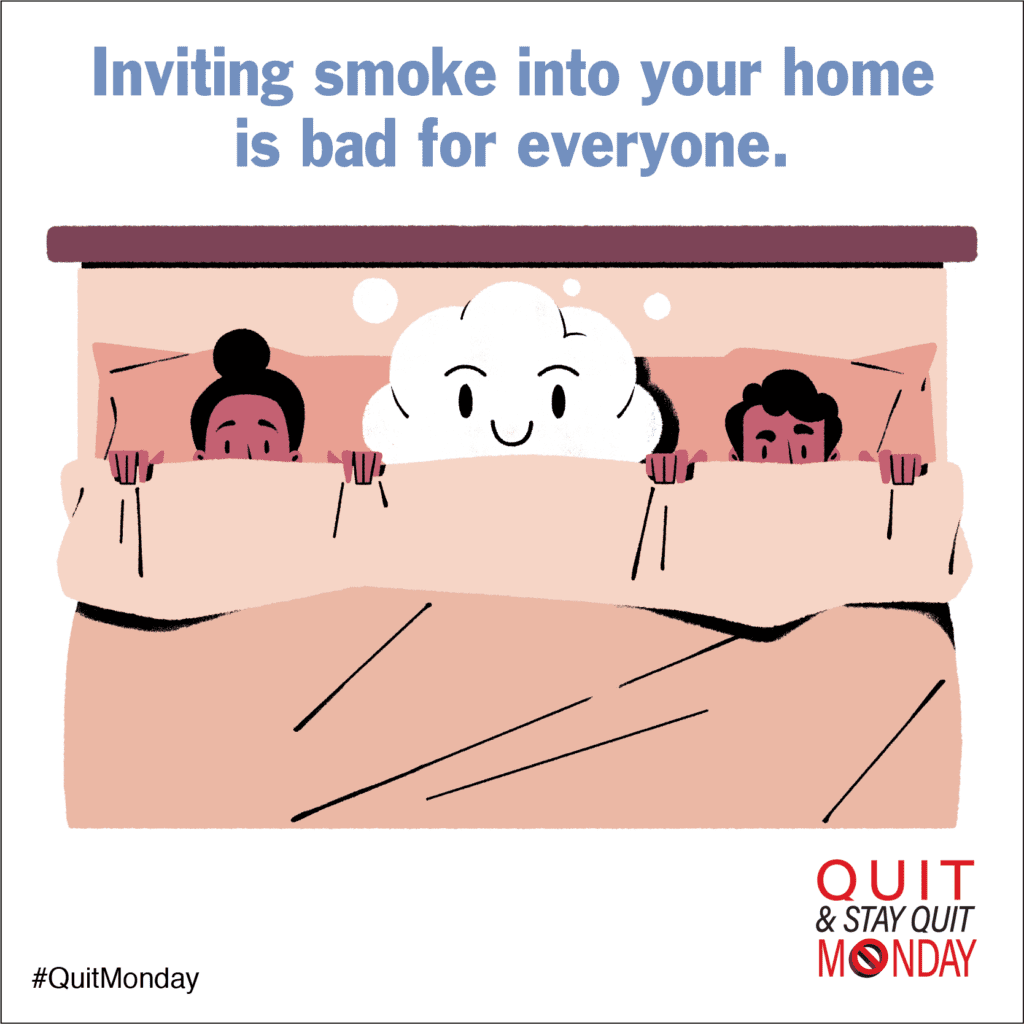The Health Effects of Secondhand Smoke on the Family
Whether it’s the hacking cough, the shortness of breath, or the yellow-stained teeth, it’s obvious that smoking is a hazard to your health, but what isn’t so obvious is the danger that smoking poses to those around you.
Secondhand smoke kills more than 42,000 nonsmokers each year. That’s right — 42,000 nonsmokers.
And this number doesn’t include the millions of people who are exposed to the harmful effects of secondhand smoke each year. Cigarette smoke cannot be contained by walls or arbitrary boundaries; when a person smokes, fumes escape into the air around them, creating a potential hazard to those nearby.
Secondhand smoke is most prevalent in the home or workplace, but it can also be detected in bars, restaurants, casinos, and even in the upholstery of vehicles, making no space completely out of its reach. And according to the Center for Disease Control and Prevention, “There is no risk-free level of secondhand exposure; even brief exposure can be harmful to health.”
Worse yet, the dangers of secondhand smoke don’t impact everyone equally. Unfortunately, babies, children, and adolescents who are most at risk of suffering from its painful effects.
Use Quit and Stay Quit Monday to help cut your contribution of secondhand smoke and avoid the potential dangers of secondhand smoke listed below.
Ear Infections
Studies show that a reduction in secondhand smoking in American homes was linked to fewer cases of otitis media, the scientific name for middle ear infection. Secondhand smoke increases the level of unhealthy particles in the air and can irritate the eustachian tube, which connects the back of the nose with the middle ear, leading to swelling, pain, and infection.
More Frequent and Severe Asthma Attacks
For people with asthma, an attack can be triggered by anything that irritates the airways. And although different people have different triggers, tobacco smoke is one of the most common.
Respiratory Symptoms
Respiratory symptoms, which include coughing, sneezing, and shortness of breath, are all associated with exposure to secondhand smoke. These symptoms are more common in children who breath secondhand smoke.
Respiratory Infections
Secondhand smoke can be extremely harmful to the young lungs of children. It’s estimated that secondhand smoke is responsible for between 150,000 to 300,000 lower respiratory tract infections in infants and children under 18 months of age. These infections lead to nearly 10,000 hospitalizations each year.
Heart Disease
It’s a common misconception that breathing secondhand smoke only affects the lungs. Each year, close to 34,000 people die of heart disease related to secondhand smoking.
Lung Cancer
Did you know that because of secondhand smoke nonsmokers are inhaling many of the same cancer-causing substances as smokers? That means kids, in-laws, and pets living with a smoker are at a greater risk of developing all types of cancer.
